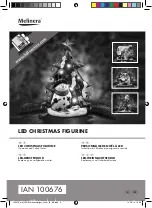
COPYRIGHT © 2015 RED.COM, INC
RED MOTION MOUNT OPERATION GUIDE
955-0013, REV-K | 20
3. Select a
Shutter Angle
or
Int. Time
(Integration Time).
SOFT SHUTTER
The MOTION MOUNT Soft shutter is a breakthrough for cinematography, using a liquid crystal shutter to solve
CMOS rolling and global shutter problems. Different from a standard global shutter, the Soft shutter causes the
liquid crystal to rapidly ramp from opaque to clear in a rounded wave. This exposes the sensor to light, taking
many discrete captures of the scene. This technique eliminates the effects of temporal aliasing and reduces
rolling shutter artifacts.
Temporal Aliasing Advantages:
Shows correct direction of rotation of cyclical motion, such as rotating propellers.
Softens blur while preserving clarity.
Reduces judder while panning.
Renders movement accurately and naturally.
Reduces flickering without requiring continuous or synchronized lighting.
Rolling Shutter Advantages:
Reduces striping or tearing artifacts from uncontrolled strobes and flashes.
Reduces skew, also known as the “jello” effect, so that fast-moving subjects are not angled or sheared.
Ensures that images are not blurred or wobbled due to rapid camera movements.
SOFT SHUTTER FRAME RATES
You can use the MOTION MOUNT shutter at frame rates up to 109.98 FPS, but the Soft shutter is most effective
at reducing temporal aliasing artifacts and rolling shutter artifacts at lower frame rates.
SOFT SHUTTER ANGLE
The Soft shutter angle ranges from 62.1° to 194.4°. The available shutter angle range at any given time
depends on the selected frame rate.
For the most natural and realistic motion, use a Soft shutter angle of 194.4°. Then, adjust the shutter angle if
necessary.
















































